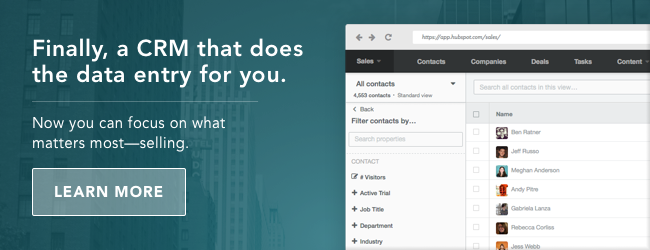Guest author Michael O. Cooper is the founder of InnovatorsandInfluencers.com and serves as executive coach, facilitator and trainer for design, software, public relations and communications firms, as well as TED Fellows.
Burning Man may seem like a strange place to glean business lessons. But it's where I've learned invaluable leadership skills, gained a ton of experience around human motivation, and brought these abilities to bear on my professional life.
I run a large 14-year-old theme camp in the Black Rock Desert at Burning Man, and the camp comes together in this challenging environment to build a temporary city that becomes our home. Then within a few days, we pack it all up and leave without a trace.
See also: 12 Ways to Get an Industry Rock Star to Join Your Startup
Though some people think we’re mad, you’d be surprised how many business executives come to this desolate plane, away from the day-to-day grind we call the "default world," to find the inspiration that enables them to become better managers and more inspiring leaders. I’ve managed 150-person all-volunteer teams in a dynamic 24-hour environment, and here are some of the most important lessons businesses can take away from my experience that can be applied to their operations.
What Burning Man Can Teach Business Leaders
At Burning Man there are lots of responsibilities. No one gets paid, though, so conventional incentive systems that businesses use to urge people to do their jobs aren't relevant.
The lack of financial reward onsite has been a huge eye-opener for me as a manager. After years of directing volunteers in the desert, I’ve learned that people are far less motivated by incentives like money or other rewards than most people realize—whether we’re working in a volunteer capacity or a paid position.
According to the article "Why Incentive Plans Can Not Work” in the Harvard Business Review, "rewards typically undermine the very processes they are intended to enhance.... They do not create an enduring commitment to any value or action. Rather, incentives merely—and temporarily—change what we do.”
Every year we have dozens of people from other camps drop by our oasis, asking "How do you do it? You’re always in a great mood and you have tons of volunteers working on everything that you need. In our camp, people are yelling at each other and we can’t get volunteers to do all the work."
There are very few consequences if volunteers don't do their part, except that someone else has to do it. Our secret has nothing to do with traditional incentive-based methods. There are no goal-oriented rewards, financial or otherwise. Instead, we focus on intrinsic motivation, encouraging mutual respect, nurturing, self-determination, creativity, cooperation, having fun and showing love. I’ve come to realize that intrinsic motivators are exceptionally powerful—not just in this desert camp, but out in the professional world as well.
1. Focus on organizational sustainability
Most people focus on the moment they are managing, but you have to play a long game if your organization is to thrive year after year. That means treating people with kindness, acknowledging their contributions, making the work fun, keeping your cool in tense moments, learning from mistakes and allowing for new ideas to emerge.
If you’re in a leadership role, and you’re a control freak, you’re going to have ongoing sustainability issues. In the book "Intrinsic Motivation and Self-Determination in Human Behavior," Edward Deci and Richard Ryan conclude that people who feel controlled, lose interest in what they’re doing. They feel manipulated and it interferes with their sense of self-determination. Based on my experience at Burning Man, I agree wholeheartedly with this view.
2. Come from love
Any cross word, angry comment or bad attitude can send volunteers packing in a heartbeat. The first rule of leading in our camp is to come from love—in other words, if the people you’re managing know that you genuinely care for them, they’re much more willing to interrupt their vacation to help wash dishes, prepare meals, pick up trash or build showers. But they must feel it.
Some people think that means “tough" love, but in my experience scolding people or publicly shaming them only makes them back away. I usually ask “Who's up for washing dishes? Or, who can go pick up ice for us?" Within a few seconds, people raise their hands and tasks are quickly completed, because we ask out of love and we have screened people carefully (see #5 below).
3. Lead by example
Be prepared for anything at any time. As a leader, it’s your job to embody the mood and tone you want to create. So get enough sleep, stay hydrated, eat well, and take proper care of yourself (especially in the harsh, unforgiving desert). Lead by example when it comes to self-care. This encourages people to take care of themselves.
At Burning Man, a sick individual could require others to care for them, if they become dehydrated or ill. That may require recruiting a few extra helpers, which is a good reminder that floating volunteers are a good idea, since they can help out with anything. If you have a project or other initiative, have some extra hands on deck, if you can, and be sure to schedule them, so there’s help when needed. Many organizations run so lean now, which can spark a crisis when someone's out sick or goes on vacation.
4. Make your work fun
We arrive a week before most event attendees and we build tents, a kitchen, showers with hot and cold water, an electrical grid, sound systems, stages, lighting, venues and art. We work very hard, but we always have great music, and we recruit a kitchen crew to put out snacks frequently. Jokes and laughter often accompany even the smallest accomplishments.
Encouraging fun is another form of engagement. But be careful here—your version of fun may not be the same as your employees. So get them involved, rather than owning this responsibility yourself.
5. Screen your team carefully and distribute work equitably
We screen people in our 150-person camp to make sure they have the right attitude. And every year, we have 2-3 people that we don’t invite back. If you’re not weeding out your non-performers, you will demoralize your team.
We also find out what people naturally like to do, observing what skills they have and what projects they might like to lead or create. In my view, part of our job as leaders is to direct the natural energy and talents people have into projects that benefit the community or the organization.
6. Set and communicate clear expectations early and often
We require people to volunteer for three shifts during the week to help out with preparing meals, cleaning up, etc. We schedule double the number of workers necessary for each task, so that when someone forgets or doesn’t show up, it's still covered. It often makes the work go faster and develops strong relationships among our volunteers.
7. Mother the martyrs
Some of our volunteers work really hard, pushing themselves, but sometimes these martyrs do more damage by burning themselves out (and taking others down with them). That can a ripple effect, since others have to cover their responsibilities when they’ve crashed and burned.
Watch out for martyrs and support them—they often won’t ask for it until it's too late. Once again, this is where floaters can help. They can backfill responsibilities, and step in when workers overextend themselves.
8. Shepherd resources wisely
In a hot, dry, dusty environment, the main resources you have are materials and personal energy. Most people understand the need to conserve water and food, but may not recognize that their personal energy also needs to be protected and directed appropriately.
We provide leads for every project and always have 3-4 projects that can be done at any time. We watch for energy spikes and direct people who are feeling active to those projects. Schedules are great, but they can still burn people out. We try to avoid that by creating a fluid project plan that directs the natural energy of the group appropriately.
9. Provide shade and encourage rest, recuperation and down time
The desert is harsh. People can’t give their best, if they’re physically not well. We regularly encourage people to relax, provide plenty of water and snacks, and build a large tent specifically for rest. That is the last tent to come down when we leave. We encourage people to take breaks and recharge, and usually after 20-30 minutes, they’re ready and eager to get stuff done.
Treat workers well and allow for breaks, rather than dangle a reward in front of them, and they may surprise you with their energy and commitment. Also make sure to address any actual issues that may prevent them from succeeding.
10. Recognize and support high contributors
We have a lot of people who do the minimum commitment of hours every year, and that’s fine. But I'm always moved by people who go above and beyond. I commit a lot of time to publicly recognizing these stellar individuals. I personally thank them for their commitment at our camp meetings, explore how they’d like to get more involved, or help them design their own personal projects.
What’s unique about high contributors is that they want to give of themselves, and they often need a little help figuring out how to do even more than they already do. They’re not doing the work because of a reward; they do it because they are inspired to innovate. Our group often benefits from these projects as well.
Most high contributors are looking for ways to do more, so be sure to pay attention and guide them if you can.
11. Appreciate all efforts
Every year, we spend a lot of time during and after the event thanking people for their time, energy, resources and commitment. This year, we’re throwing a party to publicly show our appreciation. In the past, we've commissioned an artist to create beautiful gifts for our high contributors, accompanied by handwritten notes from leaders thanking them for specific contributions. This can’t be a generic "good job" comment. If you want people to come back and step up into leadership roles year after year, they have to know they are appreciated and acknowledged.
My experience leading a theme camp at Burning Man has been an amazing study of human motivation. I agree with Alfie Kohn’s argument: "If our goal is excellence, no artificial incentive can ever match the power of intrinsic motivation. People who do exceptional work may be glad to be paid and even more glad to be well paid, but they do not work to collect a paycheck. They work because they love what they do.”
As an executive coach, I study organizational behavior and management in business environments. I observe and coach CEOs in their natural habitat, and most would completely fail in an all-volunteer environment at Burning Man. if they focused on intrinsic, rather than extrinsic motivation, their organizations might thrive. Because their teams would own more, cooperate more, do more—and accomplish more.
Lead photo by Hawaii Savvy








 Strap in, friends, bitcoin is back. After spending most of the year in something approaching the doldrums, the cryptocurrency is enjoying a strong price rally, pushing it to its highest value of 2015. Of course, trading for around $320 per coin is still a mere fraction of its former heights. But at the same time, if you picked up some bitcoin when it dipped below $200 earlier this year, the…
Strap in, friends, bitcoin is back. After spending most of the year in something approaching the doldrums, the cryptocurrency is enjoying a strong price rally, pushing it to its highest value of 2015. Of course, trading for around $320 per coin is still a mere fraction of its former heights. But at the same time, if you picked up some bitcoin when it dipped below $200 earlier this year, the… 
.jpg)




 The world of online marketing strategy is full of pitfalls and potential content marketing mistakes. Digital marketing personalization is one of them.
The world of online marketing strategy is full of pitfalls and potential content marketing mistakes. Digital marketing personalization is one of them.




.jpg) In order to convince people in emerging markets that its app is still valuable for them, Facebook needs to make sure that it works on any kind of phone with any kind of connection, as well as possible.
In order to convince people in emerging markets that its app is still valuable for them, Facebook needs to make sure that it works on any kind of phone with any kind of connection, as well as possible.  2. Making sure all those new users make it money
2. Making sure all those new users make it money  3. Spreading internet itself, to keep the new flow of users coming
3. Spreading internet itself, to keep the new flow of users coming Everywhere, all at once
Everywhere, all at once

















 It used to exist – that clear and definite line between the marketing material creators and the people that closed the deal. Marketing and sales professionals knew exactly what they had to do, did it, and to paraphrase the immortalized words of Kipling, never the twain did meet. Even when recruiting for positions in these two departments, the personality type and skills required differed vastly.
It used to exist – that clear and definite line between the marketing material creators and the people that closed the deal. Marketing and sales professionals knew exactly what they had to do, did it, and to paraphrase the immortalized words of Kipling, never the twain did meet. Even when recruiting for positions in these two departments, the personality type and skills required differed vastly. Content is where sales and marketing connect and even overlap. In our content driven society the main aim of anyone (sales, marketing, support, finance) is to provide the right content to the right people at the right time. While marketers have known and accepted this for some time now (and this used to be the exclusive space of the marketer), it is becoming increasingly obvious that sales professionals who can’t, or won’t get with the content program will be left behind in their numbers game. But what does
Content is where sales and marketing connect and even overlap. In our content driven society the main aim of anyone (sales, marketing, support, finance) is to provide the right content to the right people at the right time. While marketers have known and accepted this for some time now (and this used to be the exclusive space of the marketer), it is becoming increasingly obvious that sales professionals who can’t, or won’t get with the content program will be left behind in their numbers game. But what does 
 While there are strong arguments for and against the POSITION of content marketing in a sales professional’s social selling strategy, there is little argument about its
While there are strong arguments for and against the POSITION of content marketing in a sales professional’s social selling strategy, there is little argument about its 


